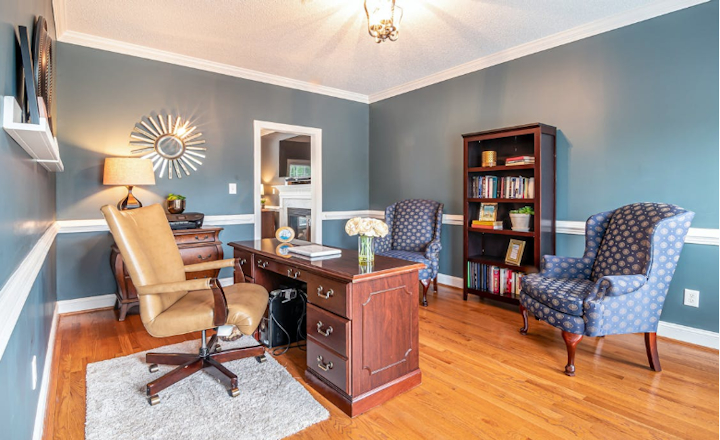
In modern houses, the importance of designating specific areas for work, play, and relaxation can’t be overstated. These dedicated spaces facilitate a balanced lifestyle and significantly contribute to our productivity, creativity, and overall well-being.
A thoughtful approach to designing these areas can transform everyday living, making each day more fulfilling and less stressful. The first step is determining whether you need professional help or can do it yourself (DIY).
Do I Need Professional Help?
When considering professional help, it's important to weigh the advantages of having access to expert advice against the cost. Professionals can help avoid common pitfalls and ensure the project is completed to a high standard, often within a shorter timeframe.
For example, consulting with perth home builders can provide insights into the latest design trends and regulations specific to Perth. This ensures your home renovation project is aesthetically pleasing, functional, and compliant with local regulations.
Many homeowners perceive the upfront cost as the main drawback to hiring professional services. Indeed, professional services can seem expensive at first glance, and the final cost often varies depending on the project's scale and complexity.
On a positive note, it's essential to consider the long-term financial implications of this initial investment. Professionals bring a level of efficiency and effectiveness to a project that can be cost-effective over time. Their expertise ensures that the job is done appropriately the first time, avoiding the costly mistakes that typically arise from DIY attempts.
Overall, DIY can be a cost-effective and satisfying approach for simpler tasks, such as painting walls, installing shelves, or updating hardware on cabinets. These projects typically require a manageable skill level and can significantly transform a space without professional intervention.
On the other hand, projects that involve structural changes, electrical work, or extensive plumbing should almost always be handed over to professionals. Such tasks not only require specific expertise but also often need adherence to building codes and regulations.
It’s more recommended to balance DIY projects with professional input. This allows homeowners to customize their spaces thoughtfully while ensuring that more complex aspects are handled safely and competently.
Here are some quick tips on how to design functional spaces for work, play and relaxation that can be DIYed if you’re on a budget or enhanced with professional input for more complex or ambitious projects.
Functional Design For Work Space
Designing a functional workspace requires careful consideration of location, furniture, and organization. Ideally, your work area should be positioned in a quiet part of the home to foster concentration. Aim to minimize disruptions by choosing a spot away from high-traffic areas.
Pay attention to the availability of natural light as well. Natural light has significant health benefits, such as reducing eye strain and headaches, enhancing mood and well-being, and improving sleep. Research also shows that it can increase productivity by improving concentration and energy levels.
Keeping your workspace organized can also impact your productivity and mental clarity. It minimizes distractions and streamlines the process of finding necessary items, allowing for a more focused and efficient work experience.
Lastly, invest in quality, ergonomic furniture. Ergonomic chairs and desks support your posture and enhance comfort during long working hours, which is why experts now recommend them as a valuable addition to any workspace.
Functional Design For Play Space
When it comes to play areas, flexibility, organization, and personalization are key. Adaptable furniture and storage solutions allow the space to cater to various activities, from crafting and reading to gaming. For example, convertible tables can serve as a surface for arts and crafts or be extended for board games and puzzles.
Similarly, utilizing wall-mounted shelves and bins for storage can keep books, toys, and craft supplies organized and accessible while making it easy to clear the space for more physically active play.
If your home’s layout permits, creating distinct zones for different pastimes can further organize playtime. This spatial organization helps children develop creativity and a sense of independence and responsibility while providing parents with a structured environment that simplifies supervision and cleanup.
Functional Design For Rest Space
This part discusses creating a functional relaxation space but approaches functionality from the perspective of promoting relaxation, well-being, and connection rather than traditional productivity or utility. Specifically, it emphasizes the functional design aspects that contribute to a space's effectiveness in providing comfort, reducing distractions, and fostering a connection with nature.
The essence of a relaxation space lies in its comfort, minimal distractions, and connection to nature. First, furnishings should invite lounging and relaxation, with an emphasis on soft, plush textures and calming colours (e.g., soft blues, gentle greens, warm neutrals, and pastel lavenders) that soothe the senses.
Second, create a tech-free zone or an area where technology is used minimally. For children, it encourages imaginative play, social interaction, and the development of non-digital hobbies, which are crucial for cognitive and emotional growth. For parents, it offers a much-needed respite from the constant barrage of notifications and digital demands and bonding time with children.
Lastly, incorporate elements of nature, such as indoor plants, natural light, or even a small water feature. These natural elements not only amplify the peacefulness of your relaxation space, transforming it into the perfect sanctuary for unwinding and rejuvenation, but they also purify the air, reduce stress, and improve mental health.
Final Thoughts
With thoughtful planning and design, creating functional spaces in your home that cater specifically to work, play, and relaxation is possible. Each area, with its tailored approach, contributes to a harmonious and balanced lifestyle, ensuring that your home supports your needs and activities in the most effective and enjoyable manner.
| < Prev | Next > |
|---|




